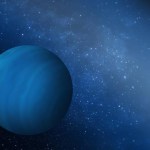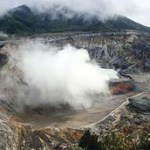planet formation
“I have announced this star as a comet, but since it is not accompanied by any nebulosity and, further, since its movement is so slow and rather uniform, it has occurred to me several times that it might be something better than a comet. But I have been careful not to advance this supposition to the public.” -Giuseppe Piazzi
So it begins again: the neverending debate about who gets to be a planet and who doesn't. Everyone can bring their own interpretation of the science to the table -- and everyone has their own preferred naming scheme -- but when I think about the Solar System, I try…
"Like all animals, human beings have always taken what they want from nature. But we are the rogue species. We are unique in our ability to use resources on a scale and at a speed that our fellow species can't." -Edward Burtynsky
It's really a romantic notion when you think about it: the heavens, the Milky Way, is lined with hundreds of billions of stars, each with their own unique and varied solar systems.
Image credit: 湖北直行便 of AstroArts, via http://www.astroarts.jp/photo-gallery/photo/13870.html.
But beyond that -- in addition to the stars -- there are hundreds of billions of planets…
"I have this one little saying, when things get too heavy just call me helium, the lightest known gas to man." -Jimi Hendrix
Hendrix, as I told you once before, was almost right. We know of helium, conventionally, as the lighter-than-air gas that we fill balloons, blimps and zeppelins with in order to quickly and easily "defy gravity" here on Earth.
Image credit: Jonathan Trappe.
At least defying gravity is what it appears to do. But what's really going on is that helium is simply a very low-density gas. Our atmosphere, a mix of mostly Nitrogen (N2) and Oxygen (O2) gases, has an…
"The important point is that since the origin of life belongs in the category of at least once phenomena, time is on its side. However improbable we regard this event, or any of the steps which it involves, given enough time it will almost certainly happen at-least-once. And for life as we know it, with its capacity for growth and reproduction, once may be enough." -George Wald
That there's an amazing story of life's evolution on Earth is a scientific certainty. The evidence is encoded in the nucleic acid sequences of every living organism ever discovered, and the history of life on this…
By Dr. Ignacio Mosqueira, an astrophysicist at the Carl Sagan Center for the Study of Life in the Universe, SETI Institute, and Gail Jacobs
Ignacio Mosqueira works with Paul Estrada to piece together the way in which giant planets - such as Jupiter and Saturn -- and their moons and rings formed. Ignacio notes that making moons is similar to forming planets. Understanding moons may have something to tell us about the possible habitats for life, since large moons could, in principle, have both the liquid water and atmosphere necessary for the kind of diverse biology we see on planet Earth.…
By Dr. Paul EstradaPlanetary physicist at the Carl Sagan Center for the Study of Life in the Universe, SETI Institute, and Gail Jacobs
If planets are a dime a dozen, moons are less than a penny each. There are at least 139 moons just within our own solar system. Most of these are the property of the gas giant planets beyond Mars. More than just a nice accompaniment to planets, moons may have habitats in which liquid water could ebb and flow - and possibly be a suitable home for life. Planetary physicist Dr. Paul Estrada investigates how moons around gas giants are formed -- an important…





